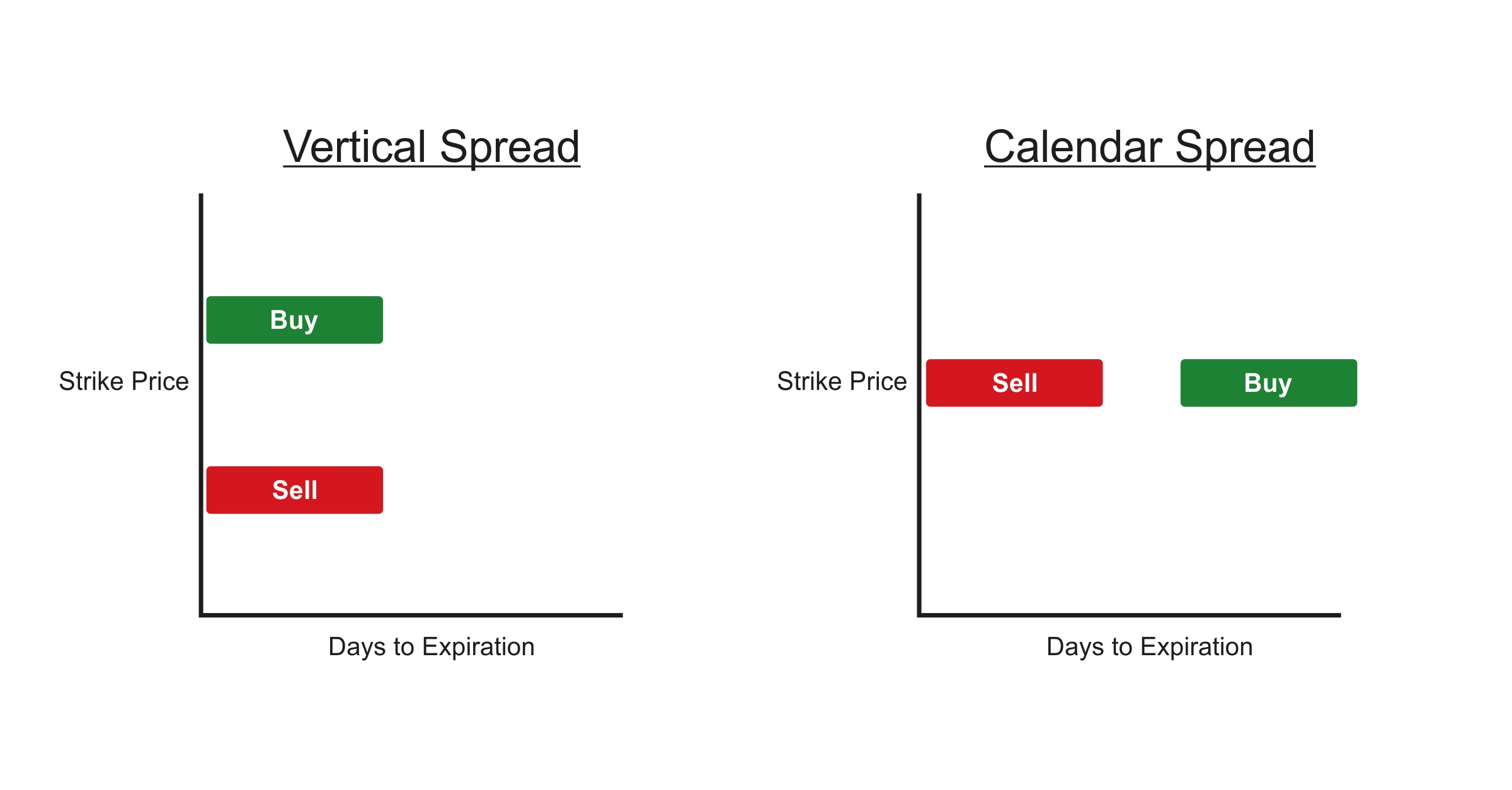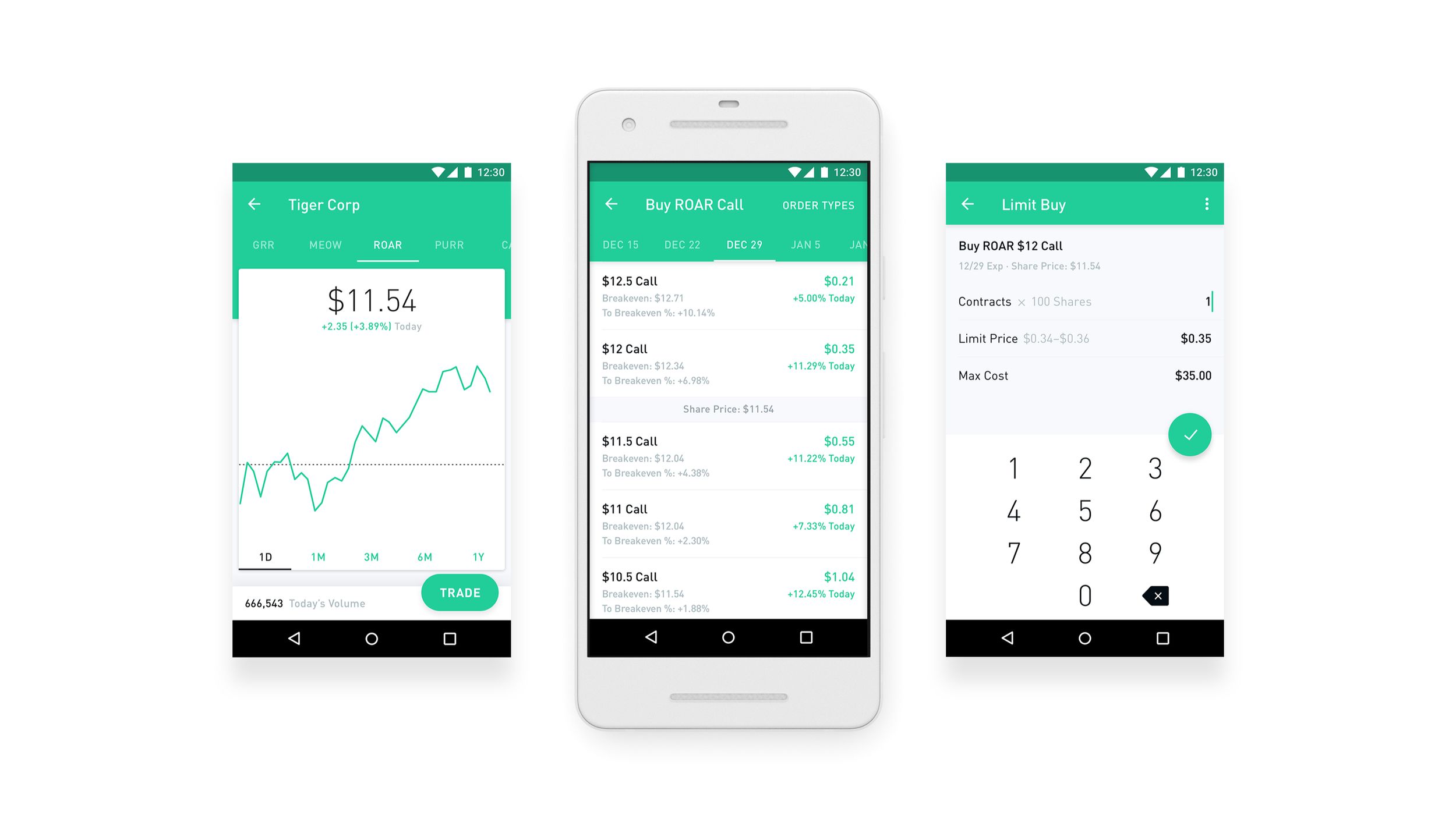Introduction
When it comes to trading in the financial markets, one of the key considerations for investors is the cost of trading commissions. These fees can quickly add up, eating into potential profits and impacting the overall performance of your portfolio. Therefore, it is crucial to find ways to lower trading commissions and optimize your trading strategy to maximize returns.
In this article, we will explore various methods that can help you reduce trading commissions and keep more of your hard-earned money in your pocket. From choosing the right broker to utilizing advanced trading techniques, we will cover a range of strategies that you can implement to minimize commission fees.
Lowering trading commissions not only saves you money, but it also allows you to diversify your investments and take advantage of more trading opportunities. By taking control of your trading costs, you can allocate more funds towards your investment objectives and potentially increase your long-term returns.
It’s important to note that while reducing trading commissions is essential, it should not be the sole determining factor in choosing a brokerage. Consider other factors such as reliability, customer service, trading platform features, and the range of investment options available to ensure you find a broker that aligns with your specific needs and goals.
Now, let’s explore the various strategies you can employ to lower your trading commissions and optimize your trading experience.
Choose the Right Broker
One of the first steps in lowering your trading commissions is to choose the right broker. Different brokers offer varying commission structures, trading platforms, and access to financial markets. Here are some factors to consider when selecting a broker:
Commission Fees: Compare the commission fees charged by different brokers. Look for brokers that offer competitive rates and consider whether they charge fixed or percentage-based commissions. Keep in mind that some brokers may also impose additional fees for certain types of trades, so be sure to review their fee structure carefully.
Trading Platform: A robust and user-friendly trading platform can make a significant difference in your trading experience. Look for brokers that provide intuitive platforms with advanced trading tools, real-time market data, and easy order execution. Ensure that the platform meets your specific needs and allows for efficient trade execution.
Asset Selection: Consider the range of financial instruments available for trading. If you have a particular interest in trading stocks, make sure the broker offers a wide selection of stocks from different markets. If you are interested in other asset classes such as options, futures, or forex, ensure that the broker provides access to these markets.
Regulation: It is crucial to choose a broker that is regulated by a reputable financial authority. Regulatory bodies ensure that brokers adhere to strict standards of conduct and provide investor protection. Look for brokers regulated by recognized authorities, such as the Securities and Exchange Commission (SEC) in the United States, the Financial Conduct Authority (FCA) in the United Kingdom, or the Australian Securities and Investments Commission (ASIC) in Australia.
Customer Service: Good customer service is essential, especially when you encounter issues or have questions. Research the broker’s reputation for customer support and consider reading reviews or seeking recommendations from other traders. A responsive and helpful customer service team can make a big difference in resolving any trading-related concerns.
By carefully evaluating and comparing different brokers based on these criteria, you can find a broker that offers competitive commission rates, a reliable trading platform, a wide range of assets, strong regulation, and excellent customer service. Choosing the right broker sets the foundation for successfully lowering your trading commissions.
Negotiate Commissions
Did you know that you can often negotiate the commission rates with your broker? Many brokers are willing to lower their fees, especially if you are a frequent trader or have a significant account balance. Here are some tips to help you negotiate better commission rates:
Research Commission Rates: Before approaching your broker, do some research to understand the typical commission rates offered by other brokers in the industry. This will give you a benchmark to compare and negotiate with your own broker.
Show Your Trading Activity: If you are an active trader and have a history of frequent trades, demonstrate this to your broker. Highlight your trading volume and the potential for future trades. Brokers may be more willing to negotiate lower rates for traders who generate substantial trading activity.
Consider Account Balance: If you have a significant account balance, it gives you leverage when negotiating commissions. Brokers are often more inclined to negotiate lower rates for clients who have larger account balances, as they stand to gain more from the larger trade volumes.
Highlight Your Loyalty: If you have been a loyal client of your broker for an extended period, mention this during the negotiation process. Loyalty is valued in the financial industry, and brokers may be more willing to accommodate your request if they see you as a long-term and committed customer.
Compare Commission Packages: Some brokers offer tiered commission structures or package deals, which provide discounted rates based on the level of trading activity or the size of the account. Explore if your broker has any special commission packages and consider opting for those if they align with your trading needs.
Be Clear and Assertive: When negotiating, clearly state your desired commission rate and explain why it is fair based on the market rates and your trading activity. Be assertive, but remain respectful and professional throughout the negotiation process.
Remember that not all brokers are open to negotiating commissions, but it is worth exploring the option. Even a small reduction in commission rates can significantly impact your overall trading costs, so don’t be afraid to ask your broker if they are willing to negotiate.
Opt for Flat Fee Brokers
Another strategy to consider when aiming to lower your trading commissions is to opt for flat fee brokers. Unlike traditional brokers who charge a percentage-based commission on each trade, flat fee brokers charge a fixed fee for each transaction, regardless of its size or value. Here are some benefits of choosing flat fee brokers:
Predictability: With flat fee brokers, you know exactly how much you will be paying for each trade. This can provide peace of mind and help you better plan your trading costs. It eliminates the uncertainty of variable commission rates associated with percentage-based fees, especially for larger trades.
Cost Savings: Flat fee brokers can be more cost-effective for traders who frequently trade in larger quantities. If you trade substantial volumes, a flat fee structure can result in significant cost savings compared to percentage-based commissions. You pay the same fixed fee regardless of the size of the trade.
Encourages Active Trading: Flat fee brokers often incentivize active trading by offering unlimited trading at a fixed fee. This can be beneficial for traders who engage in frequent short-term trades or employ strategies that involve multiple transactions. The ability to trade without the worry of rising commission costs encourages more active participation in the markets.
Great for Small Trades: If you primarily engage in smaller trades, flat fee brokers can be advantageous. With a fixed fee for each trade, the commission cost remains the same regardless of the trade size. This can be particularly beneficial for investors who buy and sell smaller quantities of stocks or trade in low-priced securities.
Considerations: While flat fee brokers can offer cost savings, it’s essential to consider other factors such as the trading platform, access to research and analysis tools, and customer support. Some flat fee brokers may have limited features compared to traditional brokers. Evaluate the overall value provided by the broker to ensure it aligns with your trading needs and objectives.
Before choosing a flat fee broker, compare the fee structures and offerings of different providers. Consider your trading volume, trade sizes, and preferred trading strategy to determine if a flat fee broker is the right choice for you. Keep in mind that while flat fees can be advantageous for certain traders, they may not always be the most cost-effective option for all types of trading activities.
By opting for flat fee brokers, you can potentially reduce your trading costs and have better control over your commission fees. However, it’s crucial to evaluate the overall value and suitability of the broker based on your specific trading requirements.
Consider Active vs. Passive Trading
When looking to lower your trading commissions, it’s important to consider the difference between active and passive trading strategies. Active trading involves actively buying and selling securities in an attempt to outperform the market, while passive trading involves a more hands-off approach, often relying on low-cost index funds or exchange-traded funds (ETFs) to track the performance of a specific market index. Here are some factors to consider when deciding between active and passive trading:
Active Trading:
Trading Frequency: Active trading typically involves a higher frequency of trades. This can result in increased commission costs, especially if you are executing multiple trades within a short period. If you prefer an active trading strategy, ensure that the potential returns outweigh the associated commission expenses.
Research and Analysis: Active trading requires in-depth research, analysis, and monitoring of market trends and individual securities. Successful active traders often spend significant time and effort researching and staying updated on market developments. Consider whether you have the time, knowledge, and resources to actively trade and whether the potential rewards justify the added costs.
Trading Skills: Active trading requires a certain level of skill and expertise in identifying market trends, analyzing stock charts, and executing trades at the right time. If you are confident in your trading skills and have a track record of successful trades, active trading may be a suitable option despite the higher commission costs.
Passive Trading:
Lower Costs: Passive trading strategies, such as investing in index funds or ETFs, generally have lower commission costs compared to active trading. These investment vehicles often have lower expense ratios and require fewer trades, resulting in lower overall trading expenses.
Diversification: Passive trading strategies typically involve investing in a diversified portfolio of assets that track specific indices. This helps spread risk across various sectors and companies. By reducing the need for frequent trading and focusing on long-term investment performance, passive investing can help lower trading commissions and provide greater stability in your portfolio.
Time and Effort: Passive trading requires less time and effort compared to active trading. With a passive strategy, you can focus on long-term goals and wealth accumulation, rather than constantly monitoring market fluctuations. This hands-off approach may be more suitable for investors who prefer a more relaxed or less time-intensive investing style.
It’s important to note that there is no one-size-fits-all approach when it comes to active versus passive trading. Your decision should align with your financial goals, risk tolerance, trading skills, and available resources. Assess your own capabilities, investment horizon, and preferences to determine which approach is the most suitable for you.
By carefully considering the pros and cons of active and passive trading, you can choose a strategy that aligns with your trading objectives and helps optimize your trading commissions.
Reduce Your Trading Frequency
One effective strategy to lower your trading commissions is to reduce the frequency of your trades. By implementing a more selective and deliberate trading approach, you can minimize the number of trades you execute and thus reduce the associated commission costs. Here are some key considerations when aiming to reduce your trading frequency:
Investment Strategy:
Focus on Long-Term Investments: Instead of actively trading in and out of positions, consider adopting a long-term investment strategy. Invest in high-quality companies or funds with strong growth potential and hold them for an extended period. By taking a more patient approach, you can avoid excessive trading and the associated commission expenses.
Consider Dividend Investment: Dividend-focused investment strategies often involve holding stocks that consistently pay dividends over time. By investing in dividend-paying stocks, you can benefit from the regular income stream without the need for frequent trading. This approach can help reduce trading commissions and provide a more stable source of returns.
Trade Execution:
Utilize Longer Timeframes: Instead of focusing on short-term price movements, choose longer timeframes for your trades. By selecting a longer holding period, you can avoid the need to constantly monitor prices and execute trades. This reduces the frequency of your trades and lowers commission costs.
Optimize Entry and Exit Points: When trading, be patient and wait for favorable entry and exit points. Instead of impulsively buying or selling securities, analyze market conditions and use technical or fundamental analysis to identify optimal entry and exit points. By being selective and disciplined in your trades, you can reduce unnecessary trading frequency.
Portfolio Management:
Regular Portfolio Evaluation: Regularly review and evaluate your portfolio to ensure that your holdings align with your investment goals and risk tolerance. By conducting periodic assessments, you can identify opportunities to consolidate or eliminate underperforming positions, reducing the need for frequent trades.
Rebalance Strategically: When rebalancing your portfolio, focus on strategic adjustments rather than frequent or arbitrary changes. Rebalance when necessary, such as when your asset allocation drifts significantly from your desired targets, rather than making constant minor adjustments. This strategic approach minimizes unnecessary trading and accompanying commission costs.
Reducing your trading frequency requires discipline, patience, and a focus on long-term goals. By adopting a more selective and strategic approach, you can minimize excessive trading, lower commission expenses, and potentially improve your investment performance.
Take Advantage of Volume Discounts
Another effective strategy to lower your trading commissions is to take advantage of volume discounts offered by some brokers. Many brokers offer tiered commission structures where the commission rates decrease as the trading volume increases. Here are some key points to consider when aiming to benefit from volume discounts:
Trading Volume:
Understand Your Trading Volume: Analyze your trading activity and determine your trading volume. Brokers often define different tiers based on the number of trades or the total value of trades executed within a specific period. Knowing your trading volume will help you gauge the potential discount rates you can negotiate with your broker.
Select the Right Broker: When choosing a broker, consider one that offers volume discounts. Research various brokers and compare their commission structures to find the ones that provide discounts based on your trading volume. Look for brokers that offer transparent fee structures, clearly indicating the discount rates based on different trading volumes.
Negotiation:
Negotiate with Your Broker: Once you determine your trading volume and identify brokers that offer volume discounts, reach out to your broker to negotiate lower commission rates. Highlight your trading volume and inquire about potential discounts based on your trading activity. Be prepared to provide evidence of your trading volume to support your negotiation.
Consider Multiple Accounts: If your broker does not offer volume discounts or is unwilling to negotiate lower rates, consider opening multiple accounts with different brokers. By spreading your trading volume across multiple accounts, you can potentially benefit from various volume discount structures offered by different brokers.
Trading Strategy:
Optimize Your Trading Strategy: To take full advantage of volume discounts, optimize your trading strategy to maximize your trading volume. This may involve identifying more trading opportunities, diversifying your trading instruments, or adjusting your risk management approach. Remember to stay disciplined and ensure that your trading strategy aligns with your risk tolerance and investment goals.
Continuously Monitor Discounts: Keep track of your trading volume and the potential discounts available based on your trading activity. As your trading volume increases, regularly evaluate whether you qualify for higher volume discounts. If you surpass a particular volume threshold, reach out to your broker to renegotiate your commission rates accordingly.
By taking advantage of volume discounts, you can significantly reduce your trading commissions and optimize your trading costs. Understanding your trading volume, selecting the right broker, negotiating with your broker, and consistently monitoring discounts will empower you to make the most of your trading activities and potentially increase your overall profitability.
Utilize Limit Orders
One effective strategy to lower your trading commissions is to utilize limit orders when executing your trades. A limit order allows you to specify the maximum price you are willing to buy or the minimum price you are willing to sell a particular security. By using limit orders, you can potentially reduce trading costs and avoid unnecessary expenses. Here are some key points to consider when utilizing limit orders:
Control over Execution Price:
Buy Limit Orders: When placing a buy limit order, you set the maximum price you are willing to pay for a specific security. If the market price of that security reaches or falls below your specified price, the order will be executed. This allows you to control the price you pay for a security and potentially avoid overpaying or getting caught in unnecessary market volatility.
Sell Limit Orders: When placing a sell limit order, you set the minimum price you are willing to accept for a specific security. If the market price of that security reaches or rises above your specified price, the order will be executed. This allows you to set a target price for selling your holdings and potentially capture higher profits.
Reduce Market Orders:
Avoid Market Orders: Market orders are executed at the current available market price. While market orders offer immediate execution, they can result in higher trading costs if there is a significant difference between the current market price and the price at which you intended to trade. Utilizing limit orders instead of market orders can help you avoid unexpected price fluctuations and potentially reduce your trading commissions.
Specify Trading Rules:
Set Clear Entry and Exit Points: By utilizing limit orders, you can set clear entry and exit points for your trades. This ensures that you execute trades only when the price reaches your desired levels, allowing you to stick to your predefined trading strategy. By avoiding impulsive trades or emotional decisions, you can minimize unnecessary trading activity and associated commission costs.
Avoid Chasing Price Movements: Limit orders prevent you from chasing price movements in the market. Instead of trying to time the market by placing market orders, you can wait for the price to come to your desired level and execute your trade accordingly. This helps prevent hasty and potentially costly decisions driven by short-term price fluctuations.
Considerations:
Market Liquidity: It’s important to consider the liquidity of a security before placing limit orders. Highly liquid stocks or securities with tight spreads are more likely to have their limit orders executed promptly. For less liquid or smaller-cap stocks, placing limit orders may require more patience as there may be less trading volume at your specified price.
Longer Timeframes: Utilizing limit orders often requires a longer timeframe to allow the market price to reach your specified levels. It is essential to consider your investment horizon and trading objectives. If you have a shorter investment horizon or prefer more frequent trading, limit orders may not always be the most suitable option.
By utilizing limit orders, you can exercise more control over the execution price of your trades, potentially reducing your trading commissions and avoiding unnecessary expenses. Setting clear entry and exit points, avoiding market orders, and understanding the liquidity of the securities you trade will help you make the most of limit orders and optimize your trading strategy.
Trade in Bulk
Trading in bulk is a strategy that can help lower your trading commissions and optimize your trading costs. By consolidating your trades and executing larger transactions, you can potentially benefit from various cost-saving advantages. Here are some key considerations when trading in bulk:
Economies of Scale:
Lower Commission Rates: Brokers often offer lower commission rates for larger trades. This means that the commission you pay for a single large trade may be lower than the cumulative commissions you would pay for multiple smaller trades of the same total value. By trading in bulk, you can potentially take advantage of these lower commission rates.
Reduced Percentage-Based Fees: Many brokers charge percentage-based fees for trades, where the commission is a percentage of the trade value. Trading in bulk allows you to reduce the impact of these percentage-based fees. As the trade size increases, the percentage-based fee becomes a smaller portion of the total trade value, resulting in lower overall commission costs.
Streamlined Execution:
Efficient Order Execution: Executing larger trades instead of multiple smaller trades can be more efficient and streamlined. Instead of monitoring and executing numerous individual trades, trading in bulk allows you to focus on a single trade, reducing the time and effort required to manage your trading activities.
Market Impact: Larger trades may have a more significant impact on the market compared to smaller trades. However, by using limit orders or executing trades during periods of higher liquidity, you can minimize market impact costs and potentially optimize the execution of your bulk trades.
Considerations:
Risk Management: When trading in bulk, it’s important to consider your risk management strategies. Diversify your portfolio and spread your trades across different assets or sectors to mitigate potential risks associated with concentrated positions. Implementing sound risk management practices is crucial when executing larger trades.
Liquidity and Market Conditions: Consider the liquidity of the securities you are trading and the prevailing market conditions. Ensure that there is sufficient trading volume for the assets you wish to trade in bulk. Additionally, be aware of any market events or news that could impact the market dynamics during your bulk trading activities.
Cost-Benefit Analysis: Assess the potential cost savings of trading in bulk against any potential risks or inefficiencies. Consider the impact on your overall trading strategy, portfolio diversification, and investment objectives. Evaluate whether trading in bulk aligns with your risk tolerance and trading style.
Trading in bulk can be a cost-effective way to lower your trading commissions and optimize your trading costs. By taking advantage of economies of scale, streamlining your execution process, and recognizing the importance of risk management, you can potentially enhance your trading profitability and improve your overall investment performance.
Use Fee Calculator Tools
When it comes to lowering your trading commissions, one helpful strategy is to utilize fee calculator tools. These tools provide valuable insights into your expected commission costs based on your trading activity and the commission structures of different brokers. Here are some key benefits and considerations when using fee calculator tools:
Evaluate Commission Structures:
Compare Different Brokers: Fee calculator tools allow you to compare the commission structures of different brokers. By inputting your trading activity, such as the number of trades or the trade size, these tools provide you with an estimation of the commission costs associated with each broker. This helps you make informed decisions and choose a broker with lower trading commissions that aligns with your trading needs.
Identify Cost-Saving Opportunities: Fee calculator tools enable you to identify cost-saving opportunities by adjusting your trading behavior. By experimenting with different trade sizes or frequencies, you can determine how your commission costs change and identify the most cost-effective trading strategies for your needs.
Transparent and Accurate Calculations:
Clear Visualization: Fee calculators often present calculations in a clear and easily understandable manner. They break down the commission costs per trade and provide a total estimate, allowing you to see the impact of different trading scenarios on your overall trading expenses. This transparency helps you make informed decisions and plan your trading activities more effectively.
Accurate Estimates: Fee calculator tools use the commission structures provided by brokers to generate accurate estimates of your trading costs. However, keep in mind that these estimates are based on assumed trade volumes and may not capture all potential fees or discounts accurately. It is recommended to verify the calculated commission costs with the respective brokers directly.
Considerations:
Account for Other Fees: While fee calculators primarily focus on trading commissions, be aware that there may be other fees associated with your trading activities. These can include account maintenance fees, inactivity fees, wire transfer fees, or fees for accessing specific markets or data. Consider these additional fees when evaluating the overall cost-effectiveness of your trading strategy.
Keep Your Information Secure: When using fee calculators, be mindful of the information you input. Select reputable fee calculator tools and ensure that your personal or account information is securely handled and protected. Exercise caution when prompted to input sensitive data, and verify the credibility of the fee calculator tool before providing any personal information.
By using fee calculator tools, you can gain valuable insights into your estimated commission costs and identify potential cost-saving opportunities. These tools help you make informed decisions when selecting a broker and optimizing your trading strategy, ultimately reducing your overall trading commissions and improving your trading profitability.
Consider Robo-Advisors
When exploring strategies to lower your trading commissions, one option worth considering is utilizing robo-advisors. Robo-advisors are automated investment platforms that use sophisticated algorithms to manage and optimize your investment portfolio. Here are some key points to consider when evaluating robo-advisors:
Lower Costs:
Reduced Trading Commissions: Robo-advisors often offer lower trading commissions compared to traditional brokerage firms. As automated platforms, robo-advisors leverage technology to efficiently execute trades, resulting in reduced commission costs passed on to investors. This can be especially beneficial for investors who engage in frequent trading or have a large number of trades.
No Hidden Fees: In addition to lower trading commissions, robo-advisors typically have transparent fee structures with no hidden fees. They often charge a flat fee based on a percentage of your account balance, making it easier for you to understand and plan for your investment costs. This transparency helps you accurately assess the impact of fees on your investment returns.
Automation and Diversification:
Automated Portfolio Management: Robo-advisors automate the investment process, eliminating the need for frequent manual trades. They use algorithms to optimize your portfolio based on your risk tolerance, investment goals, and other preferences. This automated approach not only saves you time and effort but also ensures that your portfolio is managed efficiently and in line with your investment objectives.
Diversification: Robo-advisors typically prioritize diversification by allocating your investment across a broad range of asset classes and securities. This diversification helps spread risk and can potentially lower your overall trading commissions by reducing the need for frequent trades in individual securities.
Considerations:
Personalization and Control: While robo-advisors offer automated portfolio management, it’s important to consider your need for personalization and control. Robo-advisors may not provide the same level of customization as traditional brokerage accounts, and their investment strategies may be more suited for long-term investors. If you prefer a more hands-on approach or have specific investment preferences, carefully evaluate whether a robo-advisor aligns with your needs.
Human Interaction: Robo-advisors are technology-driven platforms, which means there is limited direct human interaction. If you value personal advice or prefer to discuss investment strategies with a human advisor, a robo-advisor may not be the best fit. However, some robo-advisors offer hybrid models that provide access to human advisors for additional support and guidance.
Regulation and Security: When considering a robo-advisor, conduct due diligence on the platform’s regulatory compliance and security measures. Ensure that the robo-advisor is properly licensed and operates under the oversight of financial regulatory authorities. Additionally, review their security protocols to safeguard your personal and financial information.
Robo-advisors can offer a cost-effective and convenient way to manage your investments while reducing your trading commissions. By leveraging automation, diversification, and lower fees, robo-advisors provide an alternative investment management approach that may suit investors looking to lower their overall trading costs.
Conclusion
Lowering your trading commissions is crucial to optimizing your trading costs and maximizing your investment returns. By implementing various strategies and considering different factors, you can significantly reduce the impact of commission fees on your trading activities. Here are the key takeaways:
First and foremost, carefully choose the right broker. Compare commission fees, trading platforms, asset selection, regulation, and customer service to find a broker that aligns with your trading needs and offers competitive commission rates.
Negotiating commissions with your broker is another effective strategy. Highlight your trading activity, account balance, and loyalty to potentially secure lower commission rates. Additionally, explore flat fee brokers that charge a fixed fee for each transaction.
Consider your trading approach and explore the benefits of active vs. passive trading. Assess the trading frequency that best suits your investment style, risk tolerance, and resources. Reduce unnecessary trading activity to lower your commission costs.
Take advantage of volume discounts by consolidating your trades and negotiating lower commission rates based on your trading volume. Utilize limit orders to control the execution price of your trades and avoid market orders that may result in higher commission costs.
Use fee calculator tools to evaluate different brokers, compare commission structures, and estimate your trading costs. These tools provide transparency and empower you to make informed decisions regarding your trading strategy.
Consider alternative investment options such as robo-advisors, which often offer lower trading commissions, automated portfolio management, and diversified investment strategies. However, carefully assess the level of personalization, control, and human interaction provided by robo-advisors to ensure they align with your investment goals.
By implementing these strategies and considering these factors, you can effectively lower your trading commissions and optimize your trading costs. It’s essential to continuously assess your trading activities, adapt to market conditions, and regularly review your brokerage relationship to ensure you are minimizing costs and maximizing returns. With a thoughtful approach to managing your trading commissions, you can improve your trading profitability and achieve your long-term financial goals.

























